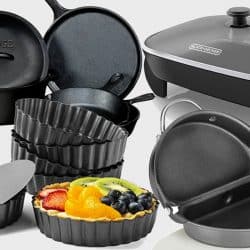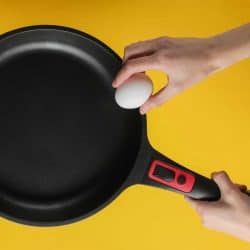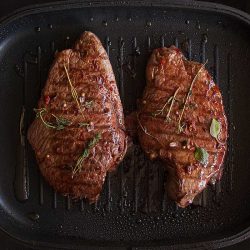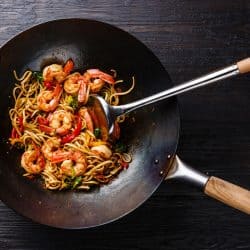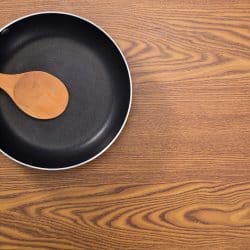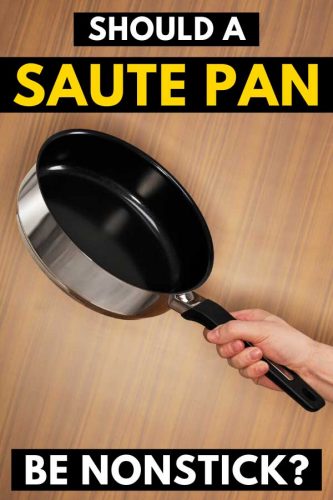 Sauté pans are fantastic for searing, pan-frying, stir-frying, and much more. They are best for high-heat situations. The reason these pans are so beloved is because of their flat sides that form a 90-degree angle all around. But how beneficial would it be to have a nonstick, sauté pan? Does a nonstick surface make their job easier or more difficult? We've done the research to answer these questions.
Sauté pans are fantastic for searing, pan-frying, stir-frying, and much more. They are best for high-heat situations. The reason these pans are so beloved is because of their flat sides that form a 90-degree angle all around. But how beneficial would it be to have a nonstick, sauté pan? Does a nonstick surface make their job easier or more difficult? We've done the research to answer these questions.
A sauté pan should not be nonstick. Nonstick coatings are generally meant for lower temperatures since the surface is known to peel or ruin under high heat. If you plan to use a sauté pan for its intended use in high temperatures, a nonstick coating would be a bad decision.
Keep reading below to find answers to common questions as we dive deeper into the world of sauté pans.
What Can You Use A Sauté Pan For?
Sauté pans have many uses. For one, they can sauté foods or cook it quickly in high heat. This is often done with vegetables or meats, so they brown as they cook. Because of the high heat, sauté pans often come with lids, so nothing splatters out on you or the floor. This also allows them to cook more evenly since the heat is trapped inside the pan.
Another use for a sauté pan is stir-frying. While this is similar to sautéing, it is usually cooked at an even higher heat. Stir-frying is typically done in a wok, but sauté pans are a great substitute because of how deep they are.
As previously mentioned, sauté pans have lids. This also means these types of pans are perfect for simmering sauces and holding liquids to heat up. The flat sides hold more liquid and allow for it to move around less.
What Foods Can You Make In A Sauté Pan?
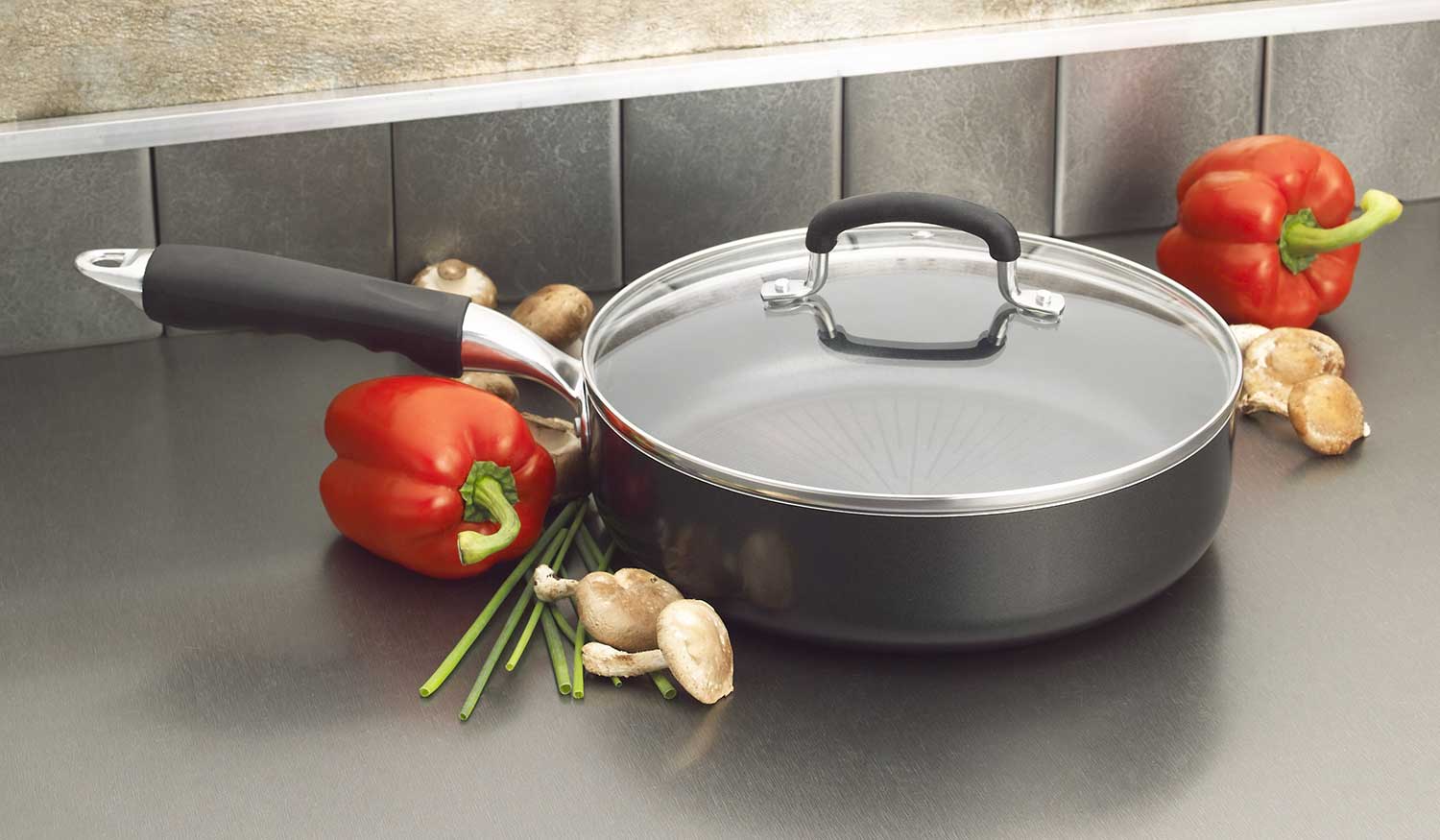
With a plethora of options at your disposal, you can cook a ton of food in your sauté pan. Meats such as steak are great to sear in these pans because of their large surface areas and performance in high heats. However, you can also sear chicken, sausages, and more. The options are limitless. A popular meat people often sear is tilapia or shrimp. The flavors and taste of a properly seasoned fish are brought out boldly in the searing process.
Sautéing vegetables such as asparagus, broccoli, mushrooms, and bell peppers are also popular options. Choosing other tender vegetables similar to these will yield even more delicious results.
Stroganoff is another great dish that's perfect for a sauté pan. The meat can brown quickly; then, the noodles can cook and absorb the liquid as the lid sits on top of the pan to lock in all the steam. The shape of the pan allows the entire dish to cook since the heat is distributed evenly to the entire area of the pan.
What Is The Difference Between A Sauté Pan And A Frying Pan?
One of the main differences between a sauté pan and a frying pan is its shape. We've already discussed the flat sides of a sauté pan. A frying pan is a little more traditional in that it has curved sides. Similar to a wok, frying pans are great for foods that are moving around a lot in the pan. These include scrambled eggs, certain types of stir fry, and other foods.
Because there is typically a lot of movement inside the frying pan, most of them have nonstick coatings. This is another difference since sauté pans do not have these coatings.
Can I Cook Food Meant For A Frying Pan In A Sauté Pan?
Yes. These pans are different from one another, but both serve a similar function. There is no hard and fast rule that scrambled eggs cannot be cooked in a sauté pan. You can cook almost anything in a sauté pan as long as you know the pan's strengths and weaknesses and adjust accordingly. Sauté pans can be great in nearly any situation if it is all you have to work with.
Can You Use Oil In A Nonstick Pan?
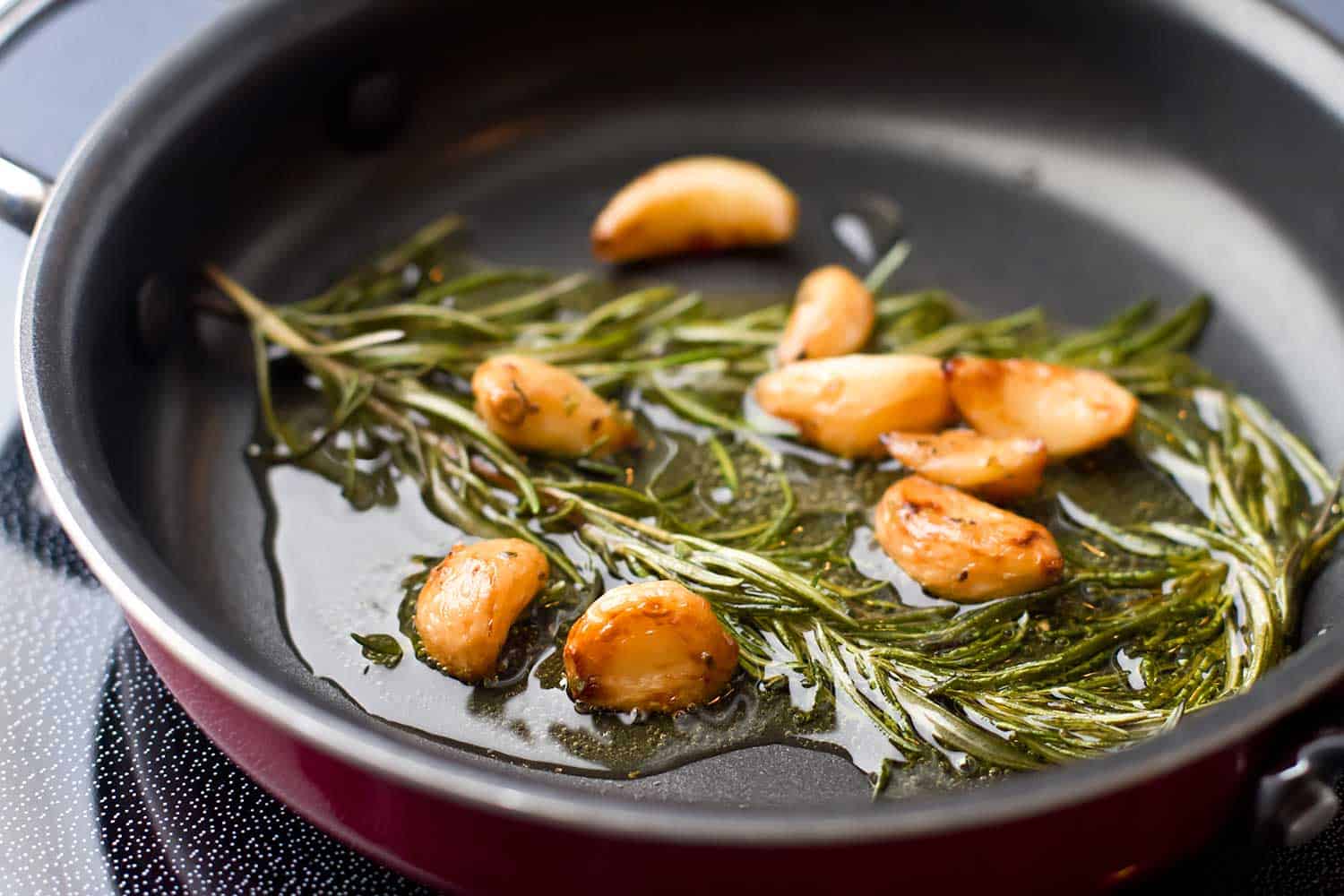
Yes, but be careful. Nonstick pans were created to eliminate the need for cooking with oil. However, some recipes call for the use of oil. The general rule of thumb is this: if you are going to use a nonstick pan to make a dish that calls for oil, try using half of what the recipe calls for. Grab a paper towel and spread the oil all over the pan then wait for it to heat up before placing the food in.
Again, nonstick pans are created to take away the need for oil, so in most cases, you will probably be fine if you remove the oil from the recipe altogether. If you do choose to use a little oil, be sure to follow the steps above and then clean it thoroughly afterward.
Can You Use Cooking Spray On Nonstick Pans?
No. Cooking spray is more inclined to build-up on your pan over time. This will ruin your nonstick coating. If you have already used it in the past, don't worry. It takes a lot of build-up to ruin the coating. Just be sure to clean the pan out as best you can and avoid using it in the future.
Summary
A sauté pan is a fantastic piece of cookware that can make cooking steak, vegetables, or many other foods a much easier experience. They are made to excel where standard frying pans cannot by cooking food at high heats, thanks to there lack of nonstick coating. Adding a sauté pan to your arsenal of kitchen equipment is one of the best decisions you can make when it comes to cooking on the stove.

